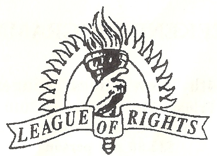Sacred Cows: Forgotten, Not Slaughtered, and Replaced, By Brian Simpson
The phrase "sacred cows are never slaughtered; they're just slowly forgotten" captures a quiet truth about human societies: revered beliefs, institutions, or ideologies are rarely toppled with fanfare. Instead, they fade into irrelevance as attention shifts elsewhere. Yet, this fading is not an end but a transition, as new sacred cows rise to take their place. From ancient empires to modern geopolitical dogmas, the cycle of reverence, neglect, and replacement shapes our world. In 2025, as global tensions flare and old certainties crumble, this dynamic is more evident than ever.
The Nature of Sacred Cows
Sacred cows are those untouchable ideals or institutions that societies hold above critique. They might be religious doctrines, political ideologies, or cultural norms deemed essential to identity or stability. In ancient India, the cow's sanctity was rooted in its economic and spiritual value, making it unthinkable to harm. In modern contexts, sacred cows take different forms: the inviolability of national sovereignty, the moral superiority of democracy, or the untouchable status of certain historical narratives. These are not easily challenged; to question them is to invite outrage or ostracism.
Yet, as the saying suggests, sacred cows are rarely dismantled through direct confrontation. They fade through neglect, as new priorities capture the collective imagination. The Roman gods, once central to an empire's identity, weren't overthrown; they were gradually eclipsed by Christianity. Similarly, the divine right of kings, a sacred cow of medieval Europe, wasn't slaughtered, but faded as Enlightenment ideas of individual liberty took hold. The process is slow, almost imperceptible, but inevitable.
The Replacement Cycle
The insight that sacred cows are replaced rather than simply forgotten adds a critical dimension. As one fades, another rises to fill the void, often with the same fervour and immunity to critique. The Soviet Union's collapse in 1991 didn't end ideological sacred cows; it replaced communism's promise of equality with the West's gospel of free-market capitalism. Today, that too is questioned as new dogmas, technological utopianism, climate absolutism, or identity-based moral frameworks, vie for dominance.
In 2025, this cycle is starkly visible. Consider the sacred cow of NATO's inviolability. For decades, the alliance was an untouchable pillar of Western security, its expansion seen as a moral and strategic imperative. Yet, Russia's demands to keep NATO out of Ukraine, as articulated by Foreign Minister Sergei Lavrov in August 2025, challenge this orthodoxy. Lavrov's assertion that European troops in Ukraine are "absolutely unacceptable" reflects a clash of sacred cows: Russia's insistence on a sphere of influence versus the West's belief in sovereign self-determination. Neither side will slaughter the other's cow; instead, prolonged conflict may erode both, making room for new geopolitical dogmas, perhaps a multipolar world order or regional power blocs.
Sacred Cows in Today's Crises
The global landscape of August 2025 illustrates how sacred cows fade and are replaced amid crisis. In Ukraine, the sacred cow of territorial integrity is under strain. President Volodymyr Zelenskyy's refusal to cede any part of the Donbas, calling it a "fortress" essential to Ukraine's survival, upholds this principle. Yet, Russia's relentless strikes, including the August 21 attack on a U.S.-owned factory in Zakarpattia, challenge the sanctity of foreign investment as a symbol of global cooperation. As peace talks falter, both sides' sacred cows, Ukraine's right to align with the West, Russia's demand for neutrality, may erode, potentially giving way to a new paradigm of pragmatic, if uneasy, coexistence.
In the Americas, the U.S.'s sacred cow of unilateral intervention is being tested. Plans for military operations against Mexican drug cartels and Venezuela's regime, despite opposition from both governments, reflect a belief in America's right to act decisively in its backyard. Mexico's President Sheinbaum's labelling of such actions as an "invasion" signals a counter-narrative: national sovereignty as a sacred principle. If these operations proceed and backfire, the U.S.'s interventionist dogma could fade, replaced perhaps by a new sacred cow of regional cooperation or isolationism.
Why Sacred Cows Persist
The replacement of sacred cows isn't just a historical quirk; it's rooted in human psychology. We crave certainty, and sacred cows provide it, offering simple truths in a complex world. When one fades, the vacuum is uncomfortable, prompting us to elevate new ideals to sacred status. Social media platforms like X amplify this, as trending narratives, whether about climate, identity, or geopolitics, quickly become untouchable truths. The challenge is recognising when a sacred cow has outlived its utility without rushing to crown its successor.
Breaking the Cycle
To avoid the endless replacement of sacred cows, we must embrace scepticism and flexibility. Leaders could start by questioning their own dogmas: Russia, its obsession with control; the U.S., its interventionist impulses; Ukraine, its all-or-nothing stance on territory. Individuals, too, can resist the allure of new sacred cows by engaging critically with social media, where ideas compete for sanctity. The goal isn't to eliminate sacred cows, they're part of human nature, but to hold them lightly, ready to let them fade when reason demands.
The world of 2025 is a crucible for this process. As old sacred cows of geopolitics, security, and sovereignty weaken, we face a choice: replace them with new dogmas or use our collective reason to forge a more adaptable path.


Comments